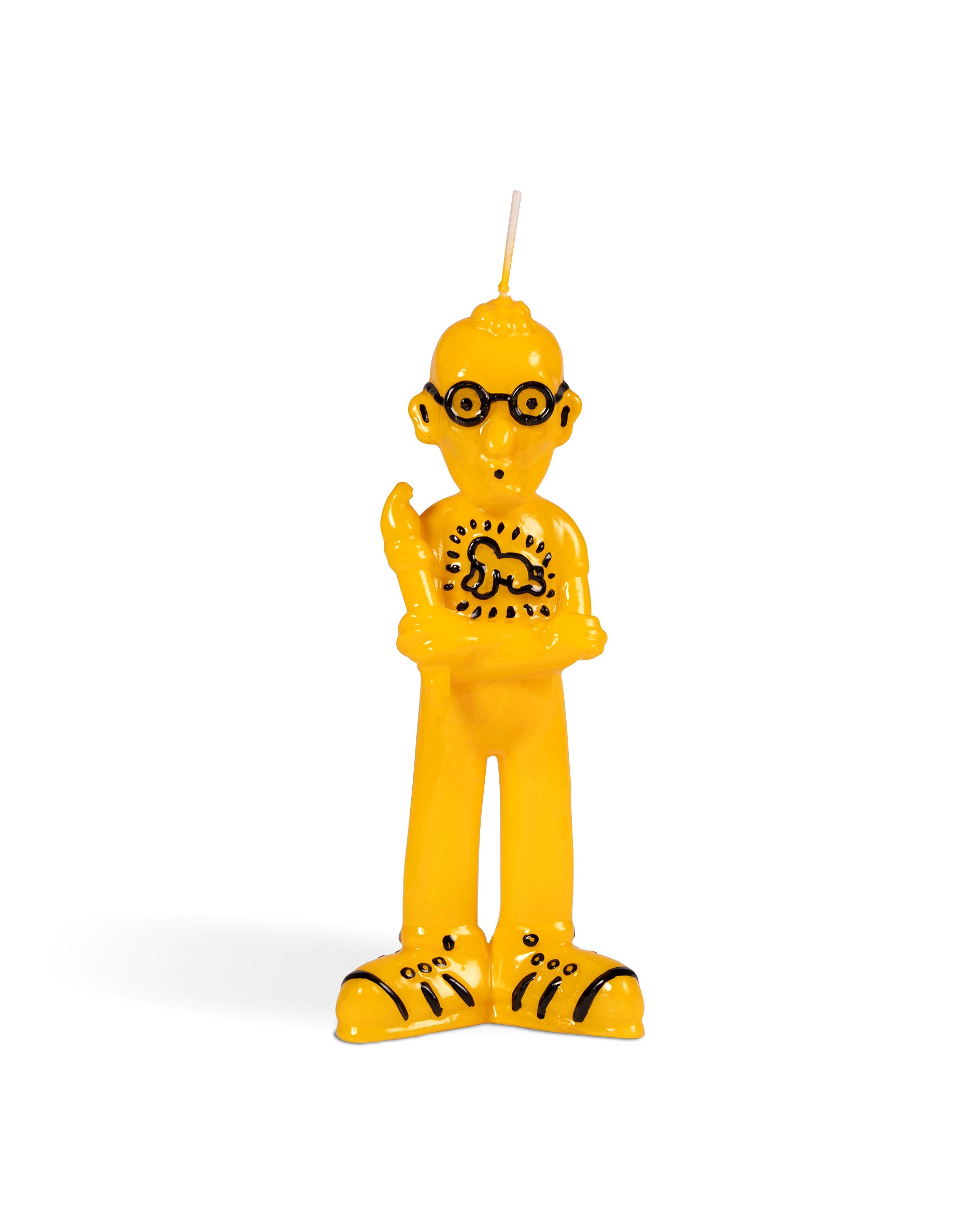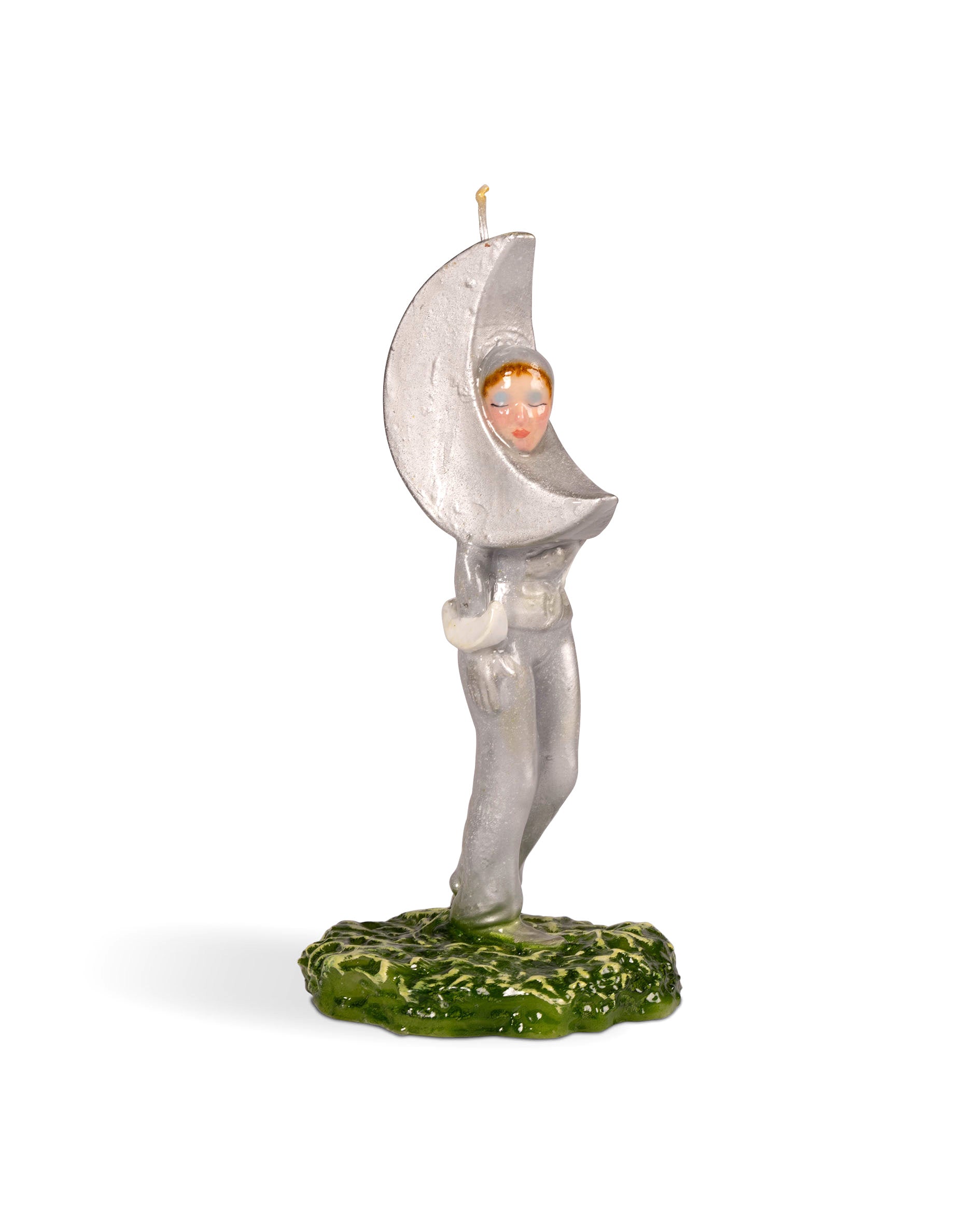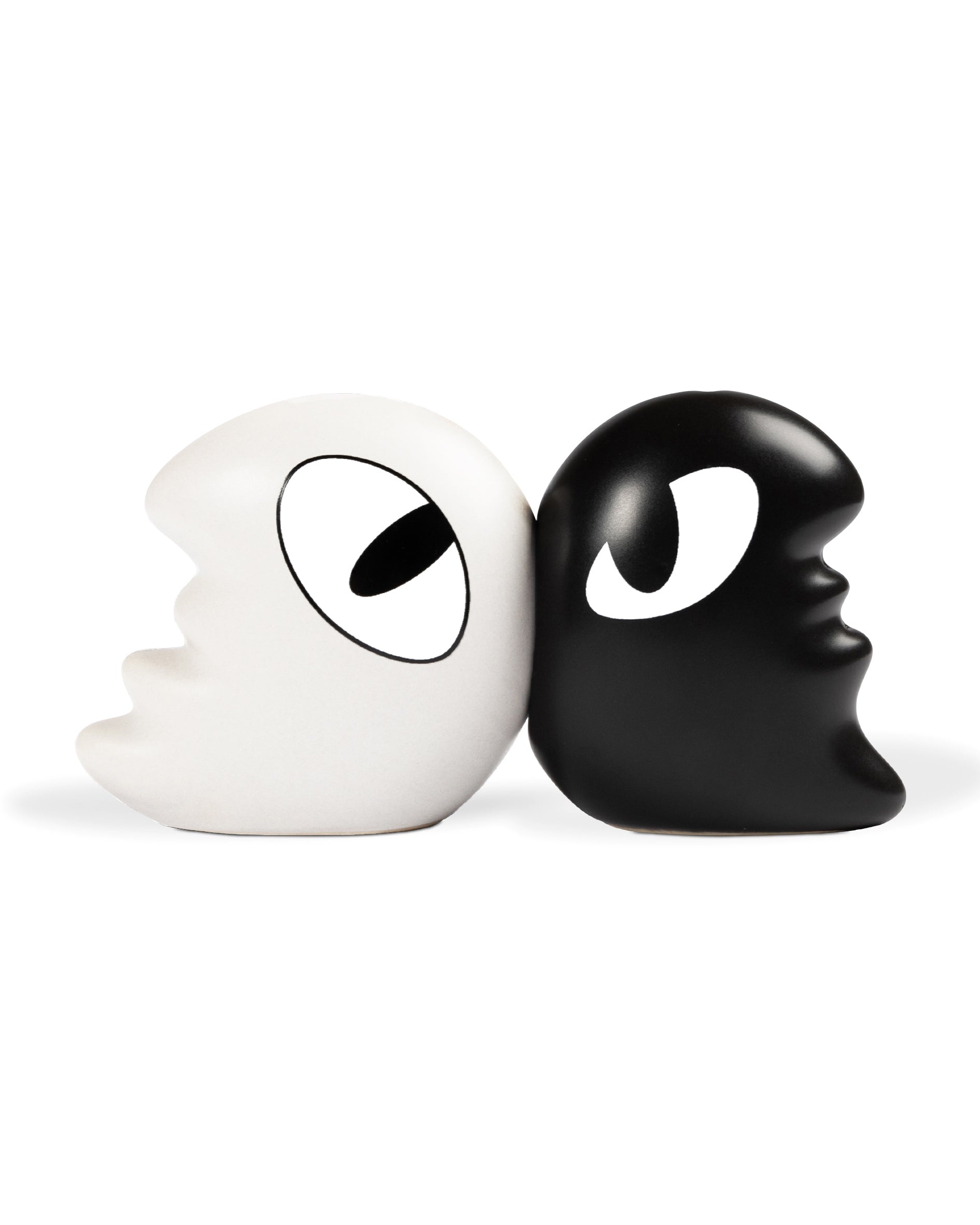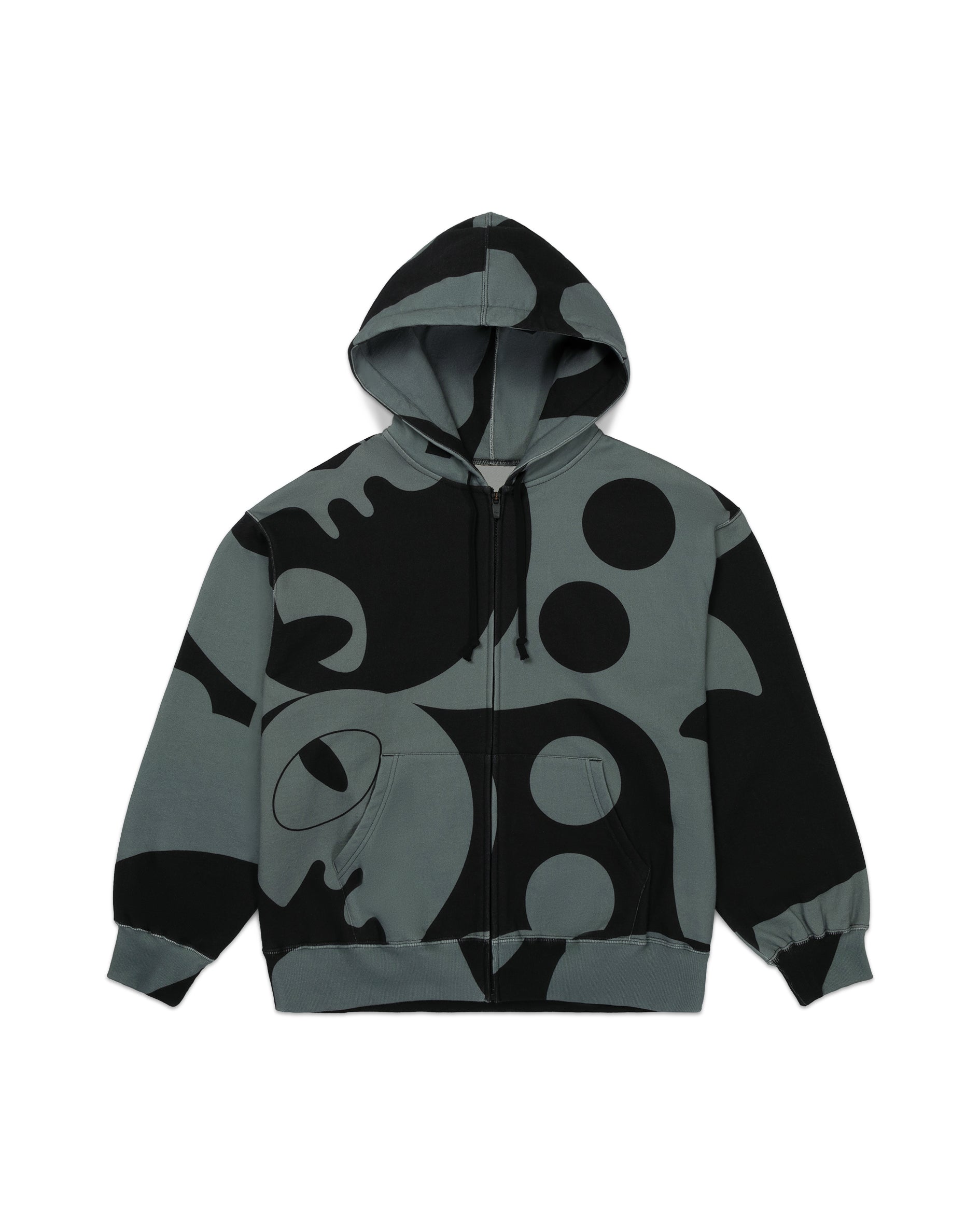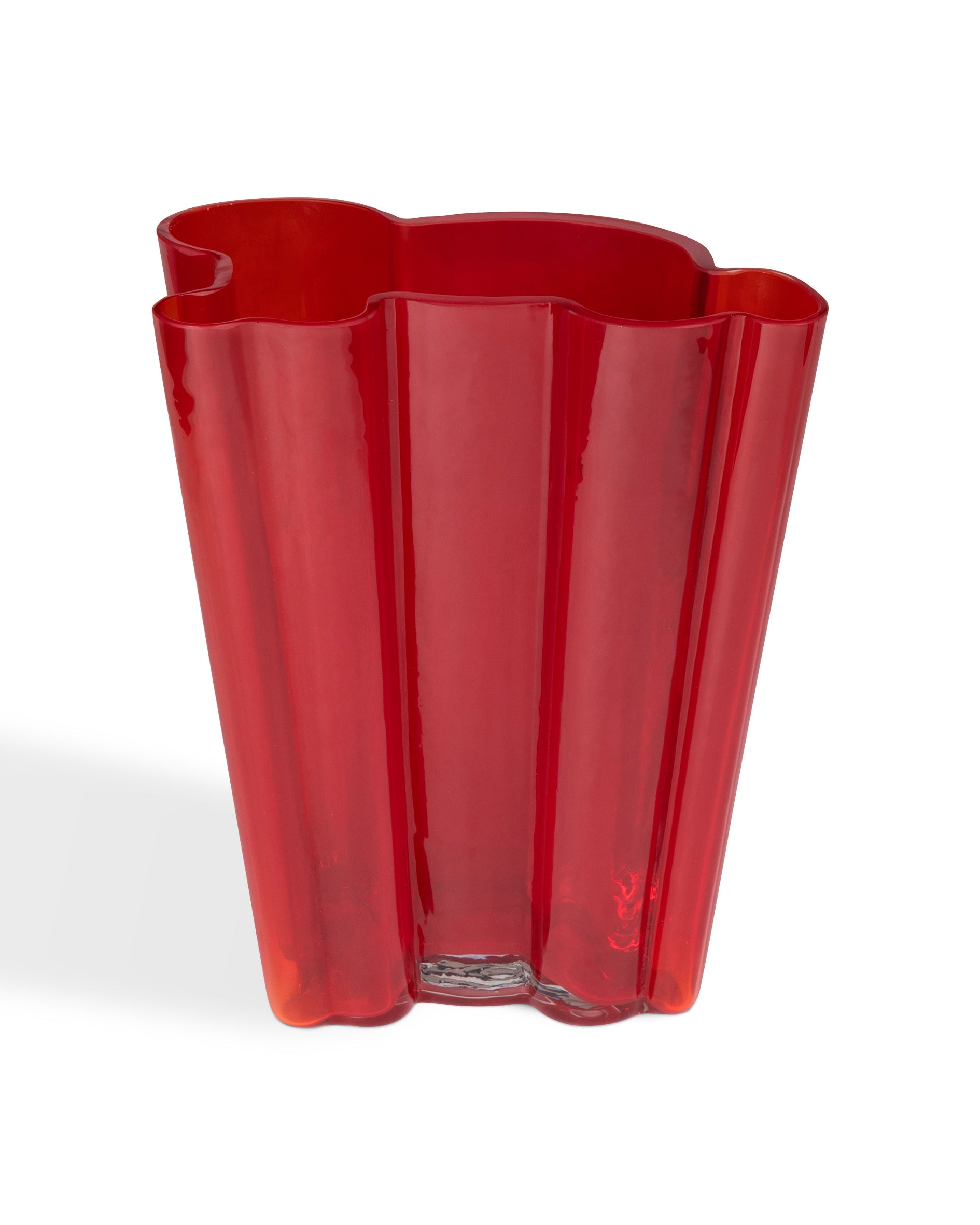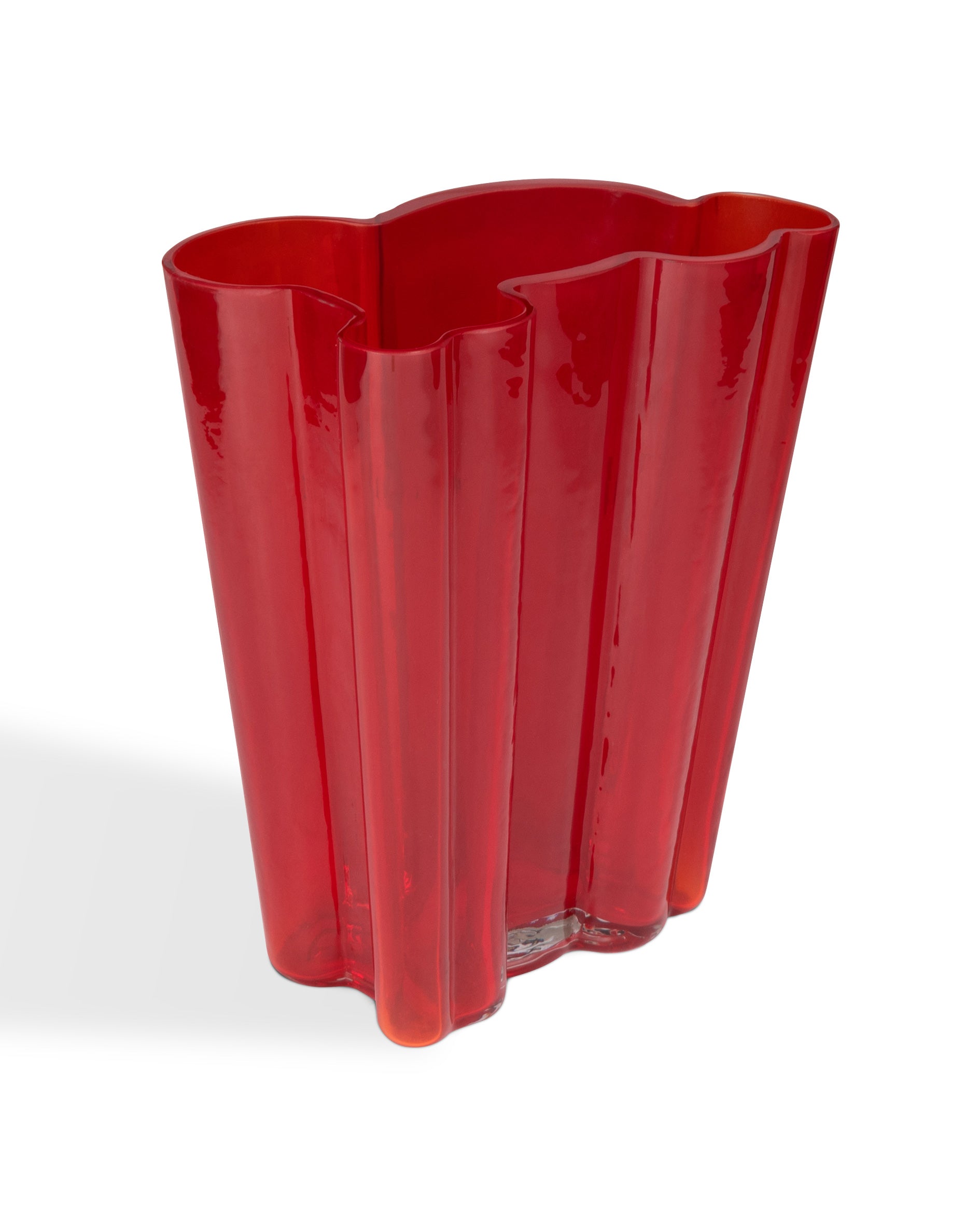For Luna Luna, Whiting created a Mechanical Theater, of clothed animated figures, props, and scenery mostly made of discarded materials.
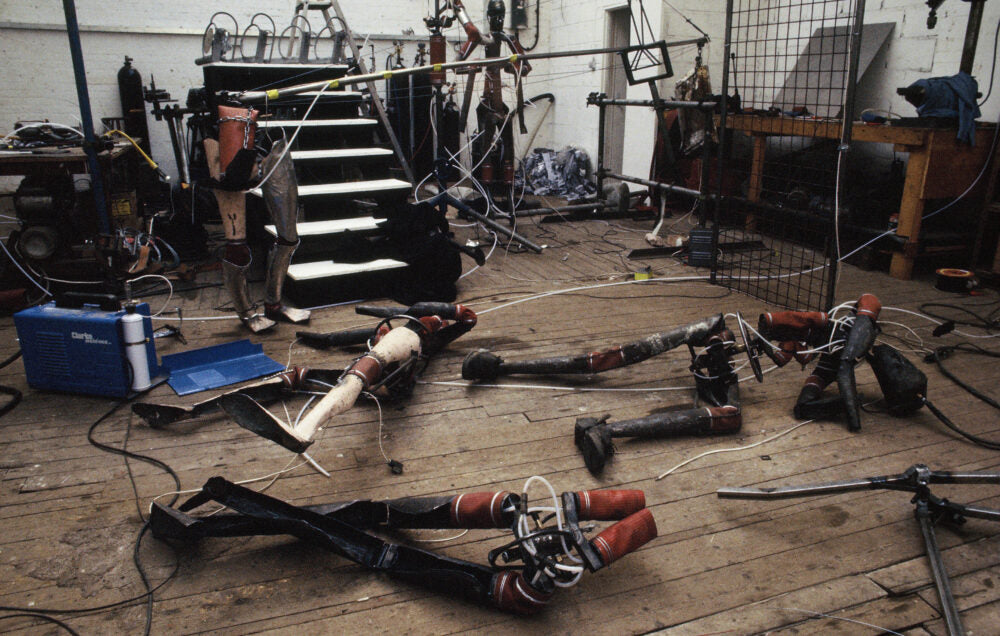
Jim Whiting, Mechanical Theater, exhibited 1987.
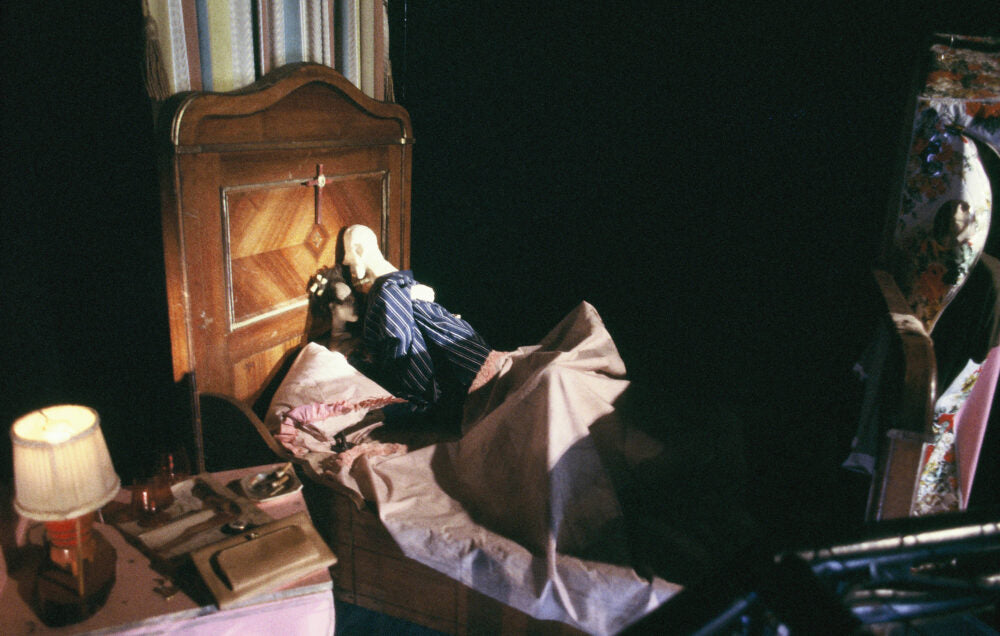
Jim Whiting, Mechanical Theater, exhibited 1987.
British artist Jim Whiting creates monumental installations in which animatronic figures and robots dance, spin, and gyrate. Since childhood, Whiting has been fascinated by the possibilities of mechanical structures that autonomously set themselves in motion. From the lever-operated biplanes made of toothpaste boxes and wire he built at age six, to the pneumatic human-machine installations for which he is best known, Whiting brings ordinary objects to life. In his elaborate worlds, protagonists perform chaotic or unpredictable movements that draw from everyday life, often as allegorical themes derived from his Catholic upbringing.
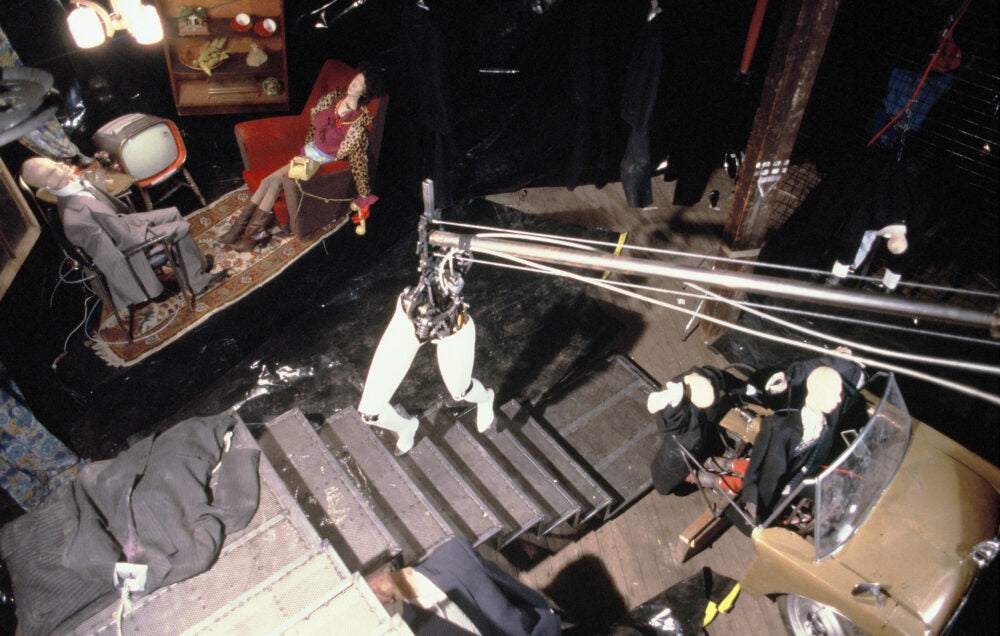
Jim Whiting, Mechanical Theater, exhibited 1987.
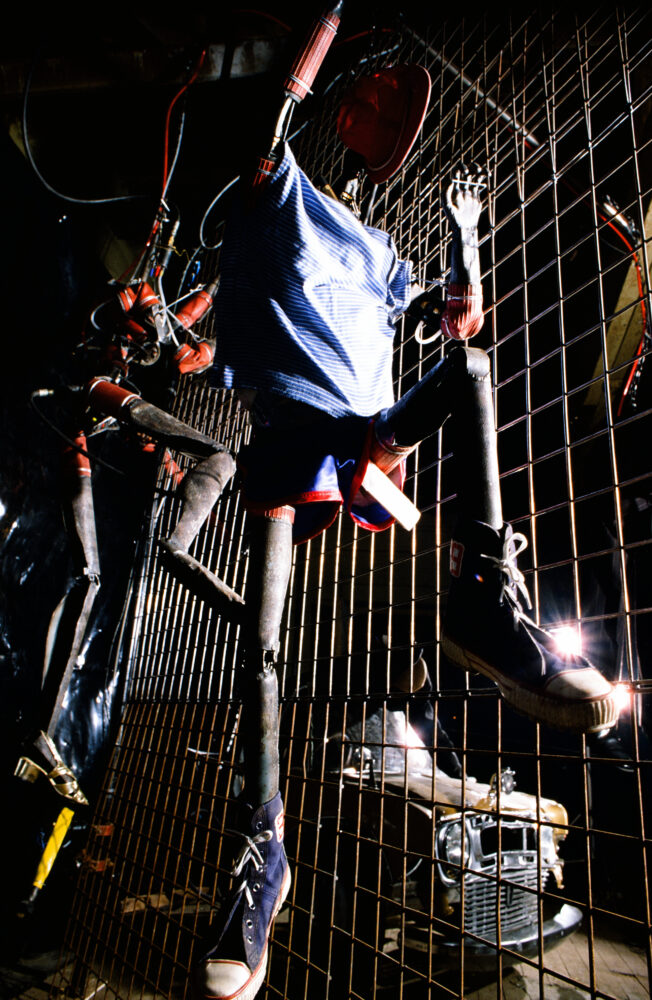
Jim Whiting, Mechanical Theater, exhibited 1987.
The otherworldly creations reached widespread critical acclaim after they appeared in the music video for jazz musician Herbie Hancock’s “Rockit” (1984)—a distorted take on middle-class domesticity with jerky robot-like figures spinning, taking baths, and reading the newspaper. Whiting and his UK crew created Bimbo Town in 1992, initially for a year in a disused factory in Basel, Switzerland. It operated as a club featuring Whiting’s mechanized figures, animated furniture, and a stage. Performers led by Andrew Bailey appeared in scenes ranging from a hair salon to a church. It continued in Leipzig, Germany until 2016, occasionally touring and constantly evolving as more robotic creatures, driving rooms, and sideshows were added, all coexisting with audience participation and visiting acts on stage.
In Whiting’s installations, or Mechanical Theater, animatronic characters such as dancing trousers or mannequins in high heels recreate daily social situations with humor and irony.
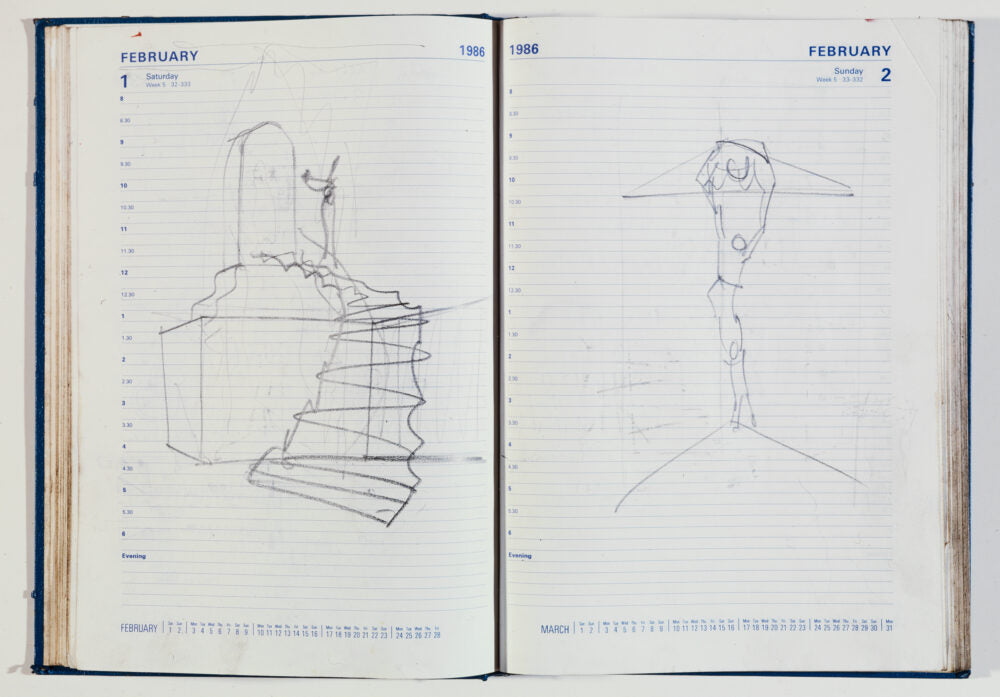
Jim Whiting, Preparatory sketches for Mechanical Theater exhibited 1987.
For Luna Luna, Whiting created a Mechanical Theater of clothed robots and mannequins mostly animated by his system of “air muscles”—fire hoses filled with air which propelled the figures in different directions. Within a large square tent, torso-less dancing trousers and human-machine figures in tails—at a bar or suspended above a car crash—formed a nightmarish luna park inspired by social exchanges of everyday life.
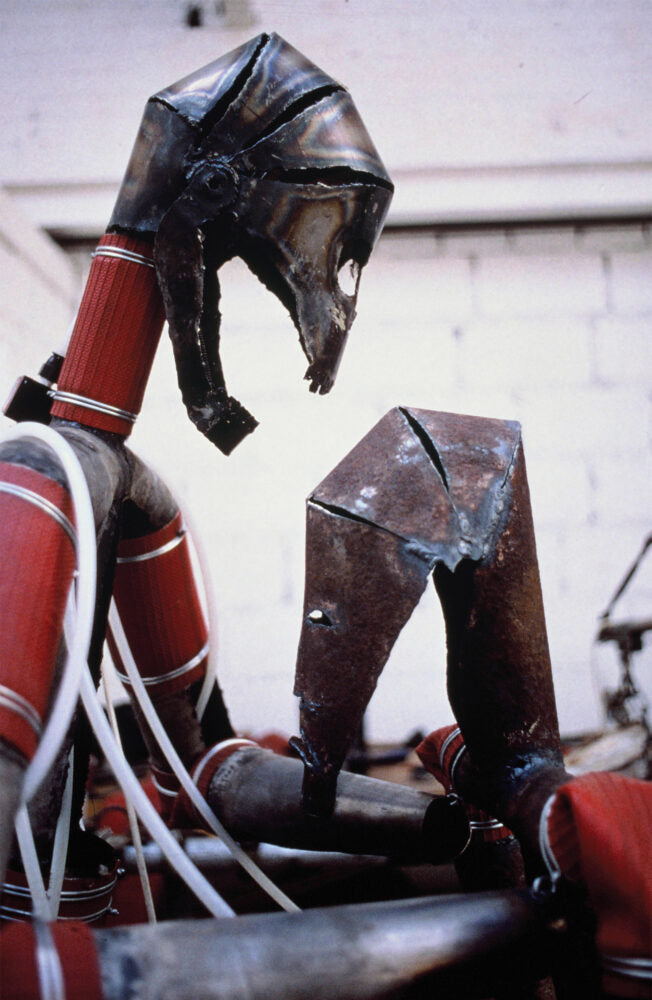
Jim Whiting, Mechanical Theater, exhibited 1987.

Jim Whiting, Mechanical Theater, exhibited 1987.


